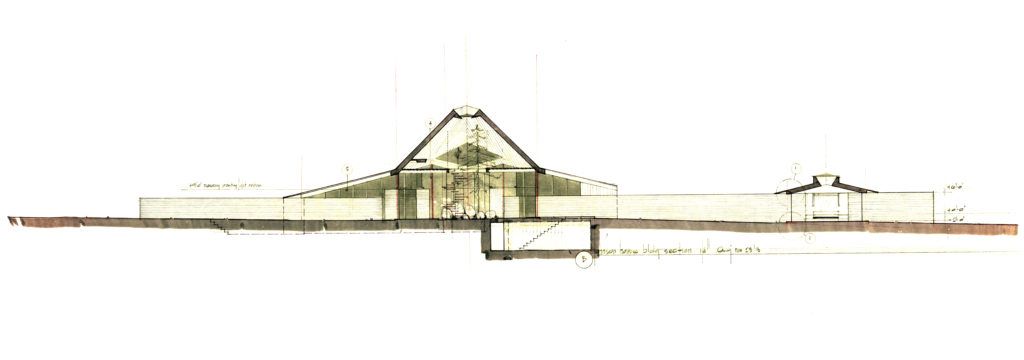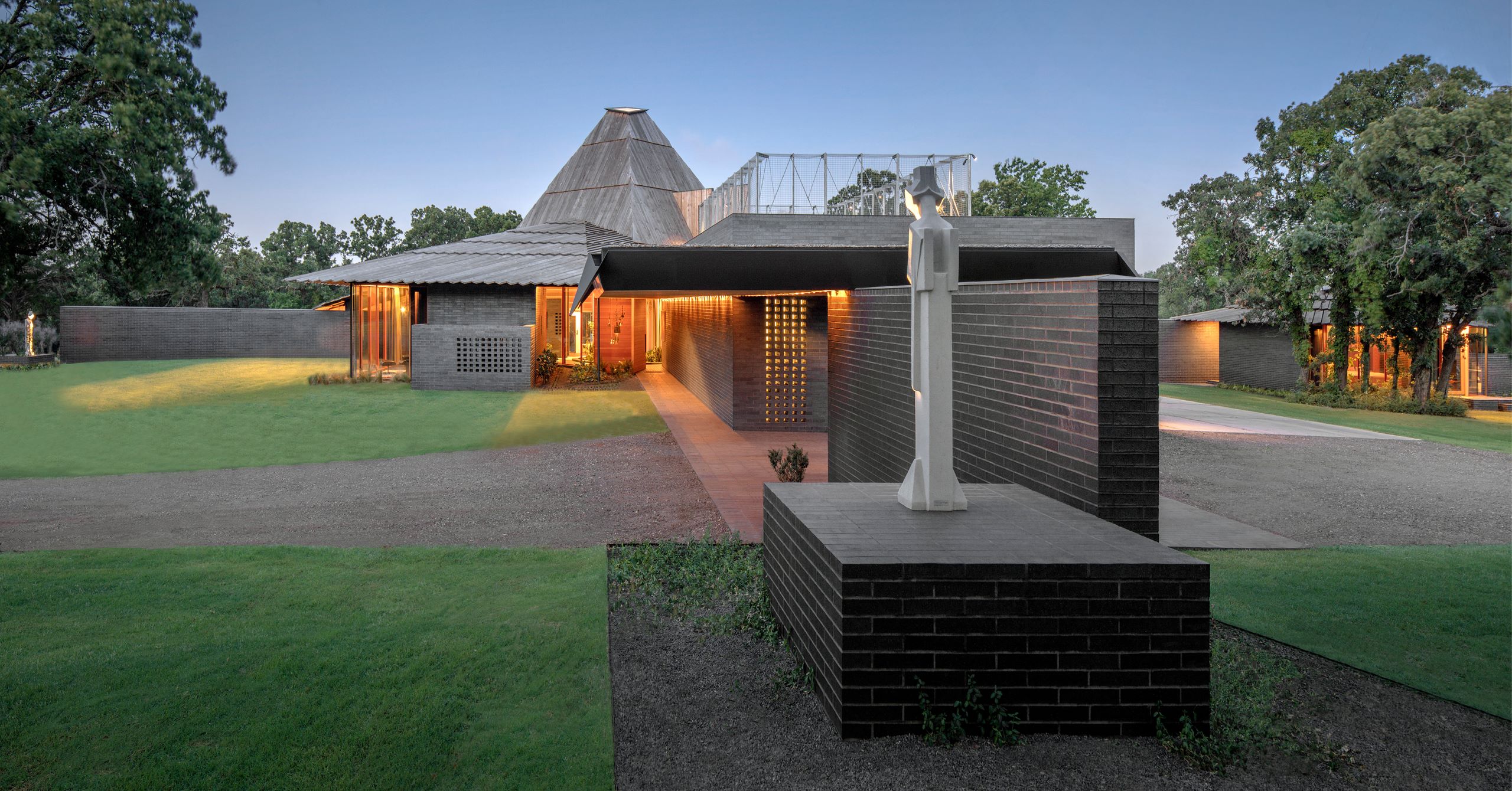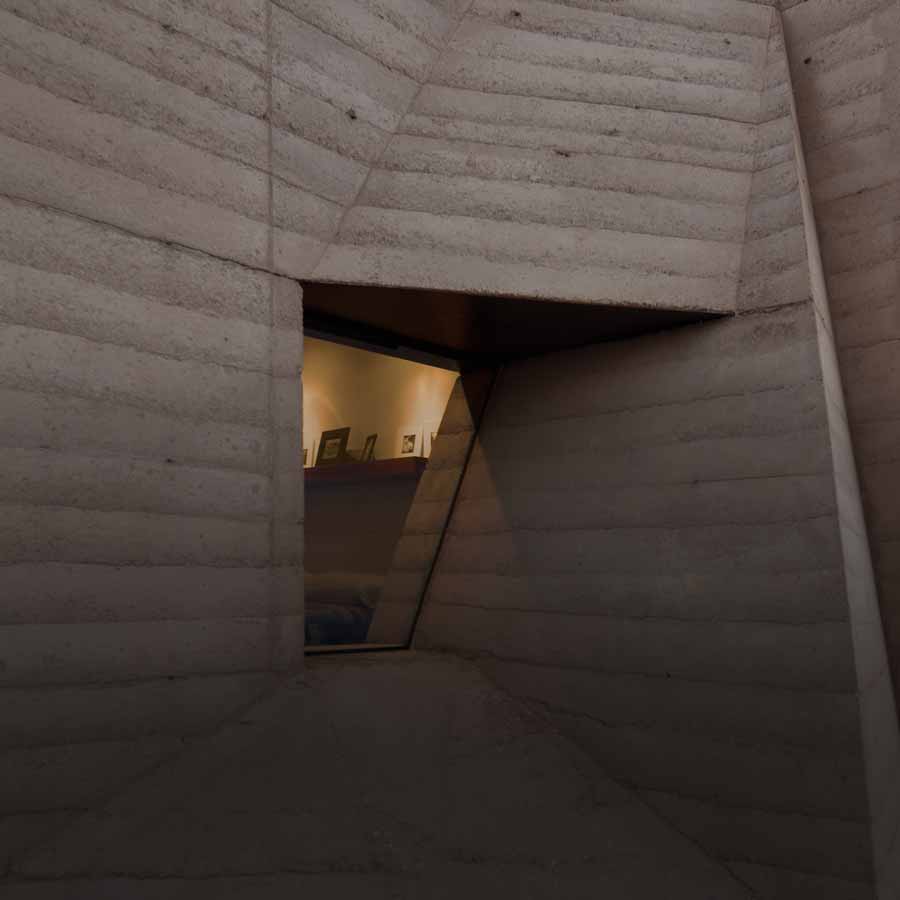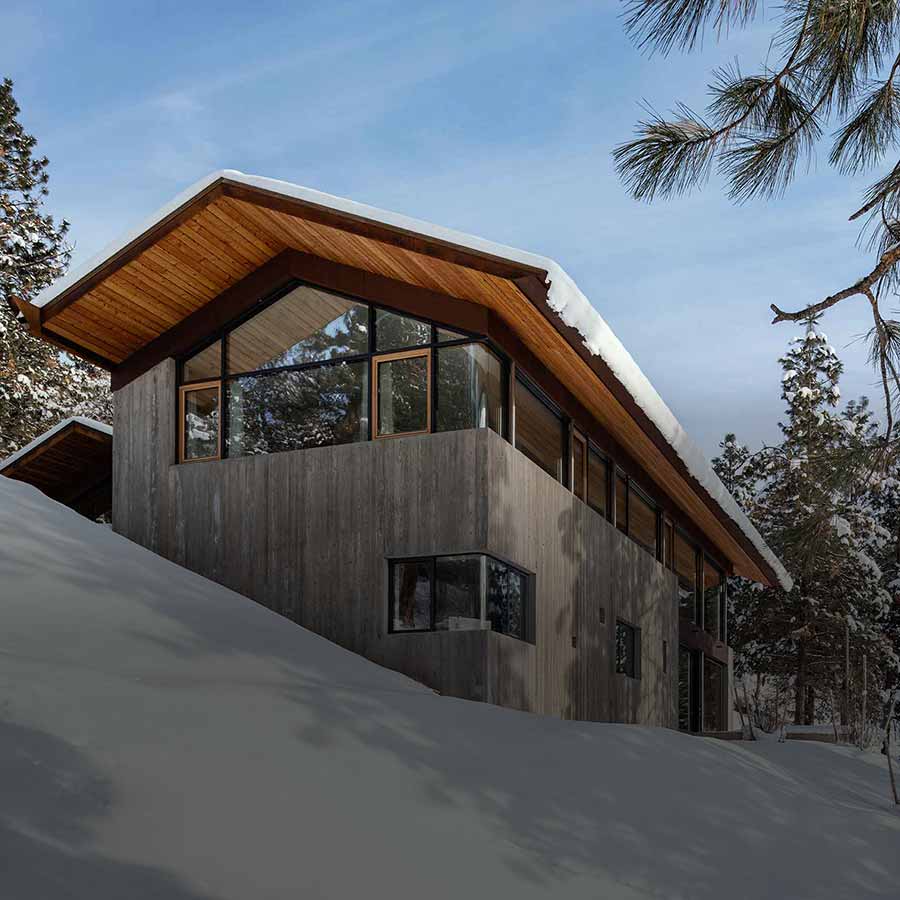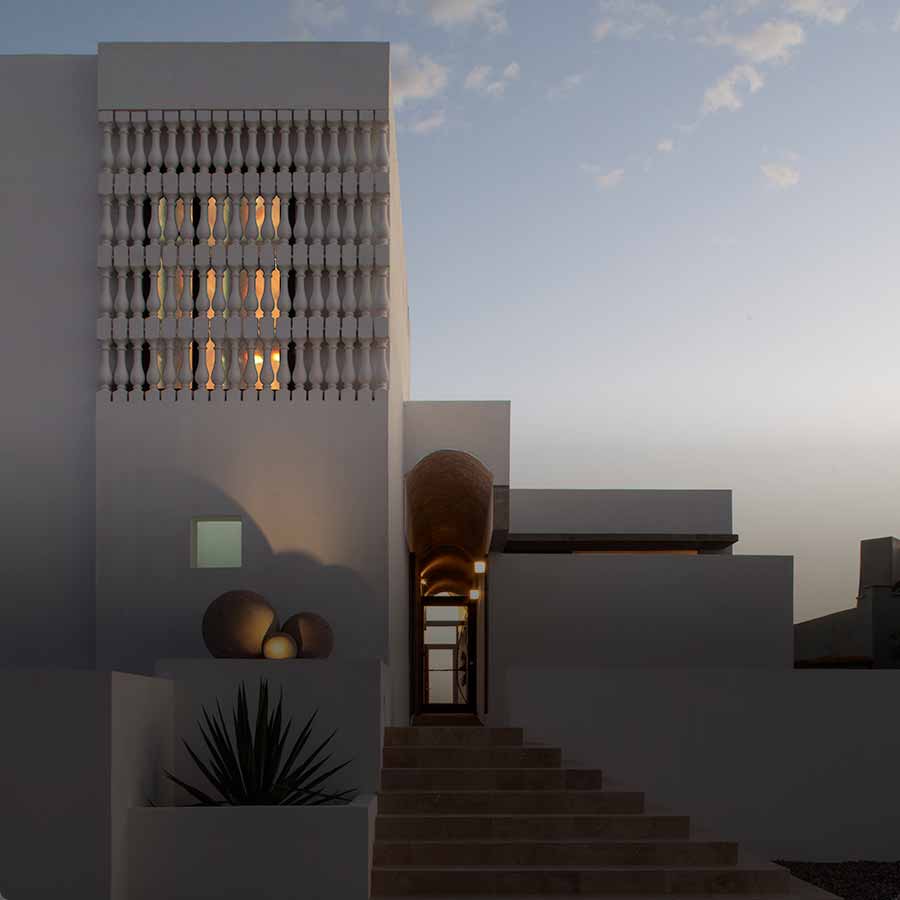
Prairie Raptor Residence
Design for the true nature of man and beast
Unknown to most of the world, a strange yet whimsical house sits among the grasslands of Norman, Oklahoma. The Prairie Chicken, as locals called it, was designed and built in 1961 by local architect Herb Greene and has since inspired generations of architects with its complex form and humble materials as an icon of midwestern vernacular architecture. This seminal project was front of mind when Warren and Becky Johnson requested a home unmistakably of its place and time, set in the clearing of a forty-acre copse of Jack Oaks on the prairie outside Oklahoma City.
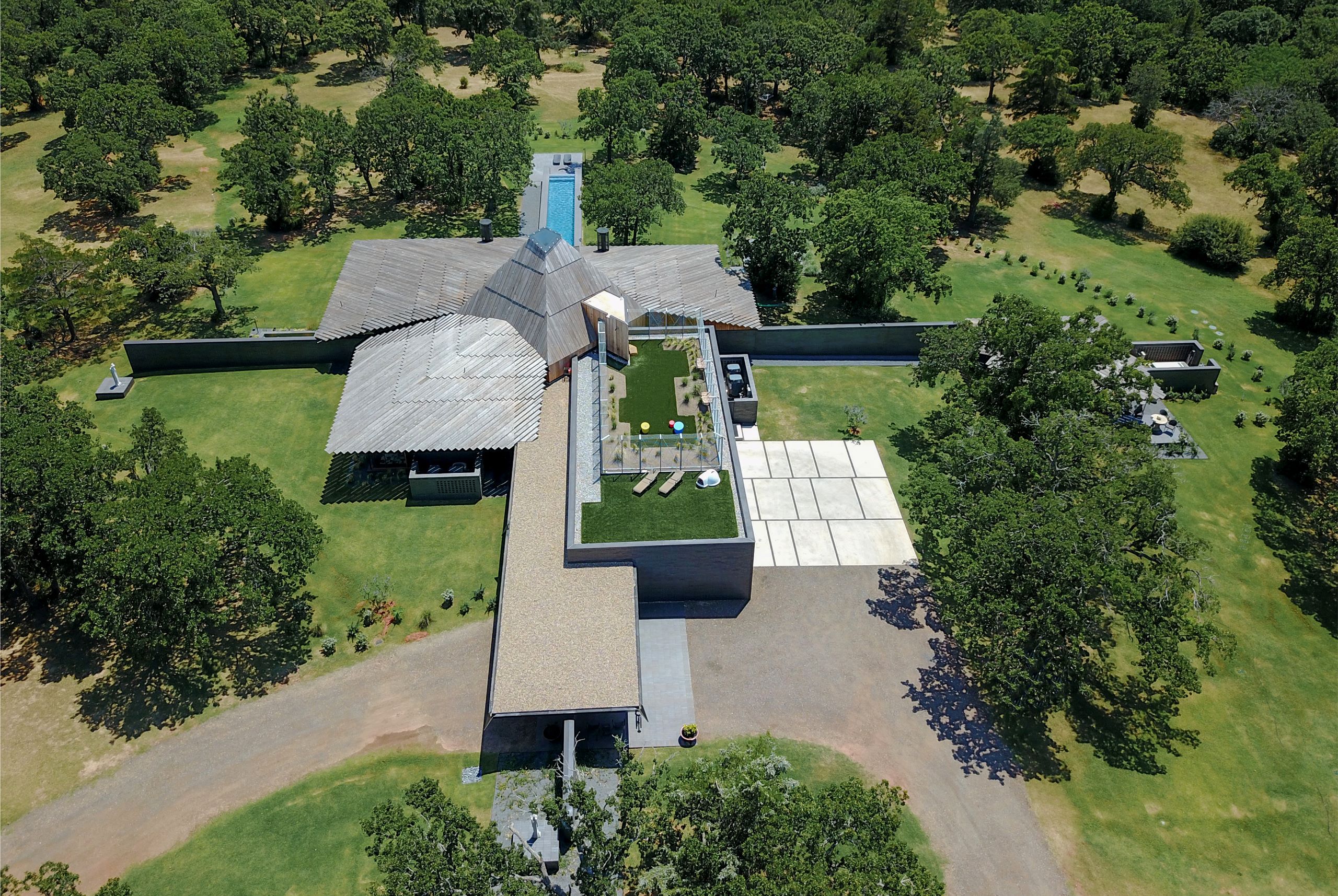
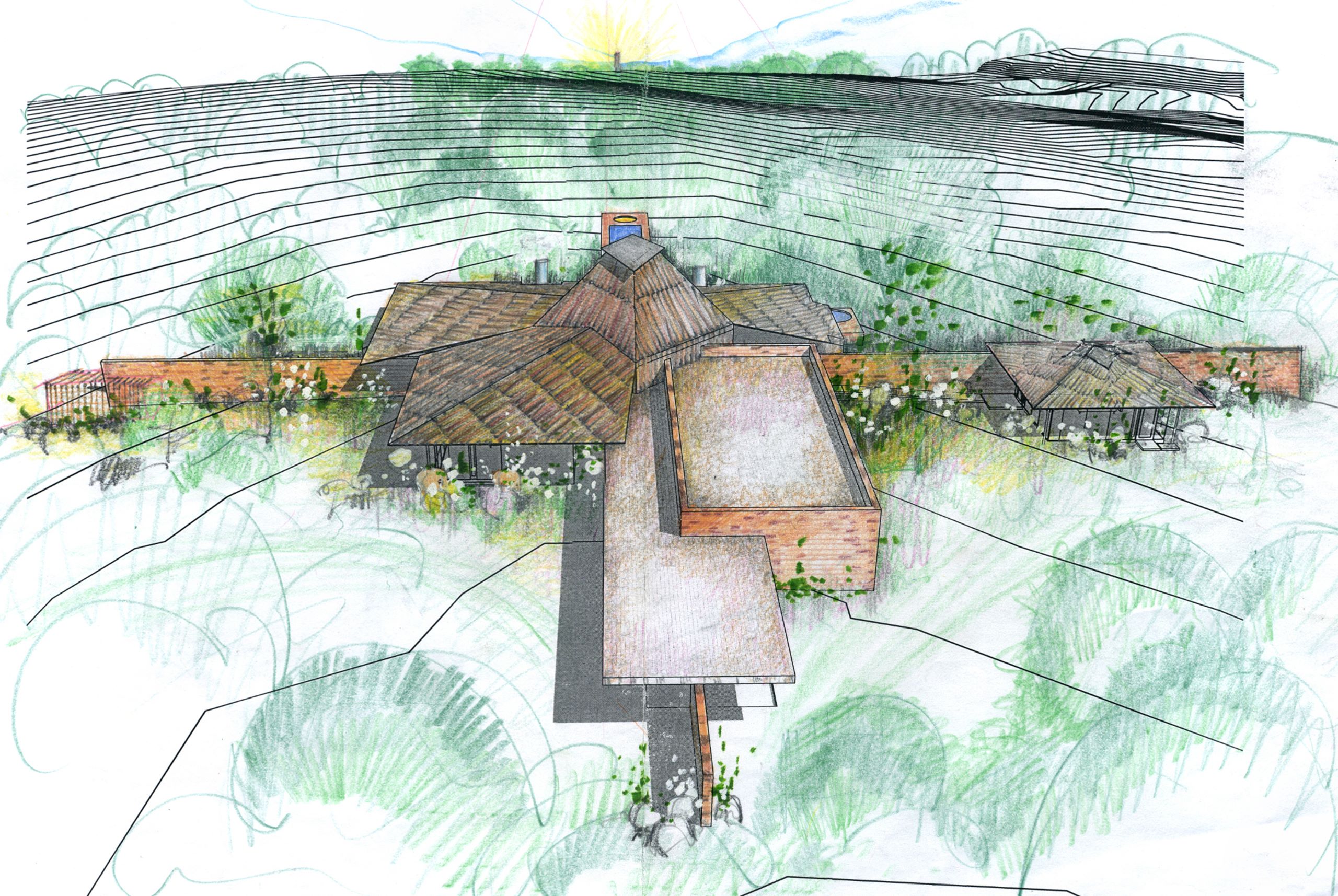
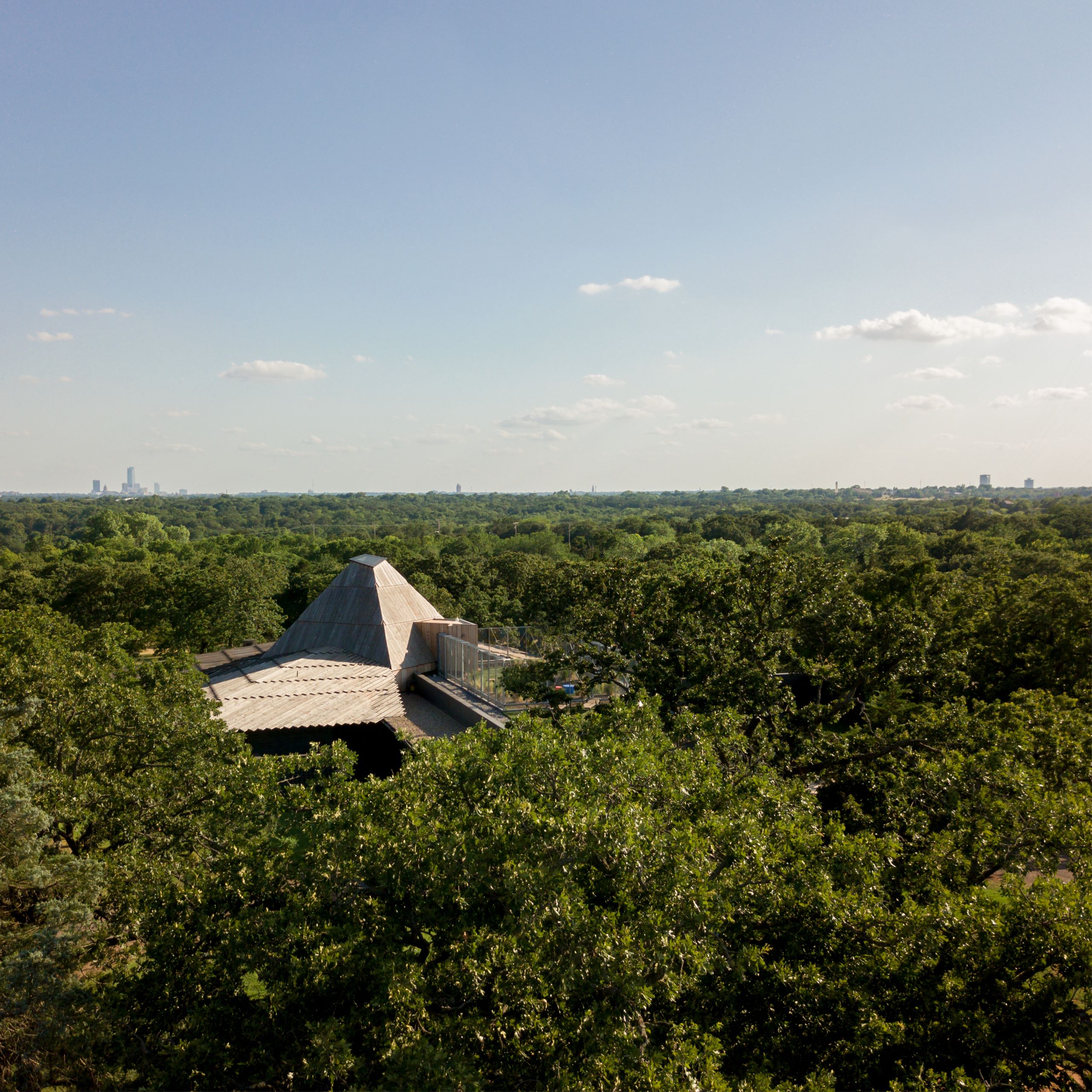
Inspired by the organic nature of its predecessor, the Prairie Raptor takes a bolder form. Set against the vast horizon of the plains and carefully situated around the existing trees, one grand wooden roof shelters the entire home, draping over the interior like a bird’s wings. The shingles of the roof lap and extend out like feathers, with a soft grey wood that will weather to match the silver bark of the trees surrounding it. Below the roof line the denser, smaller feathers of the body are represented with deep black bricks that carry an iridescent blue shimmer in the sunlight.
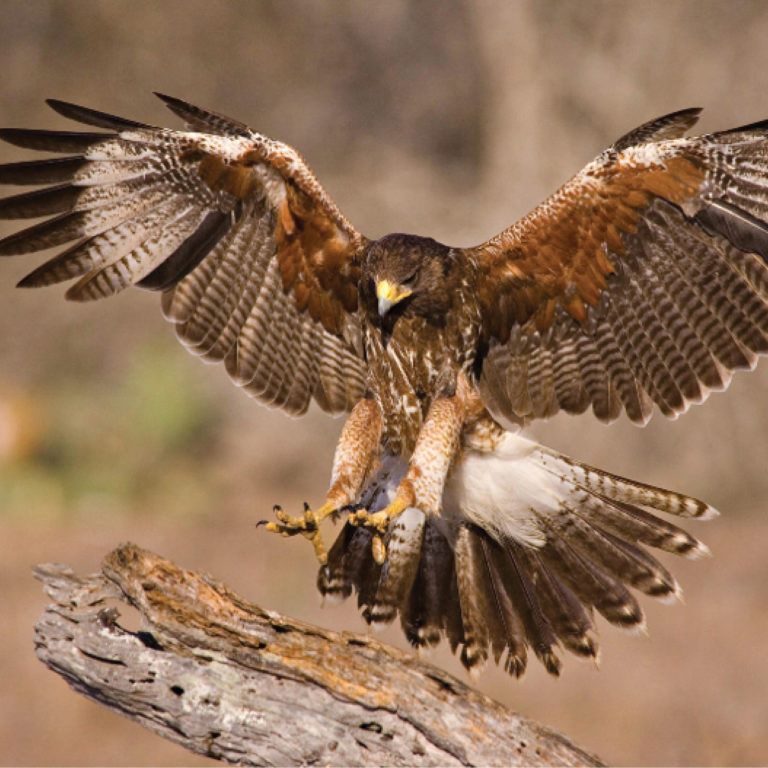
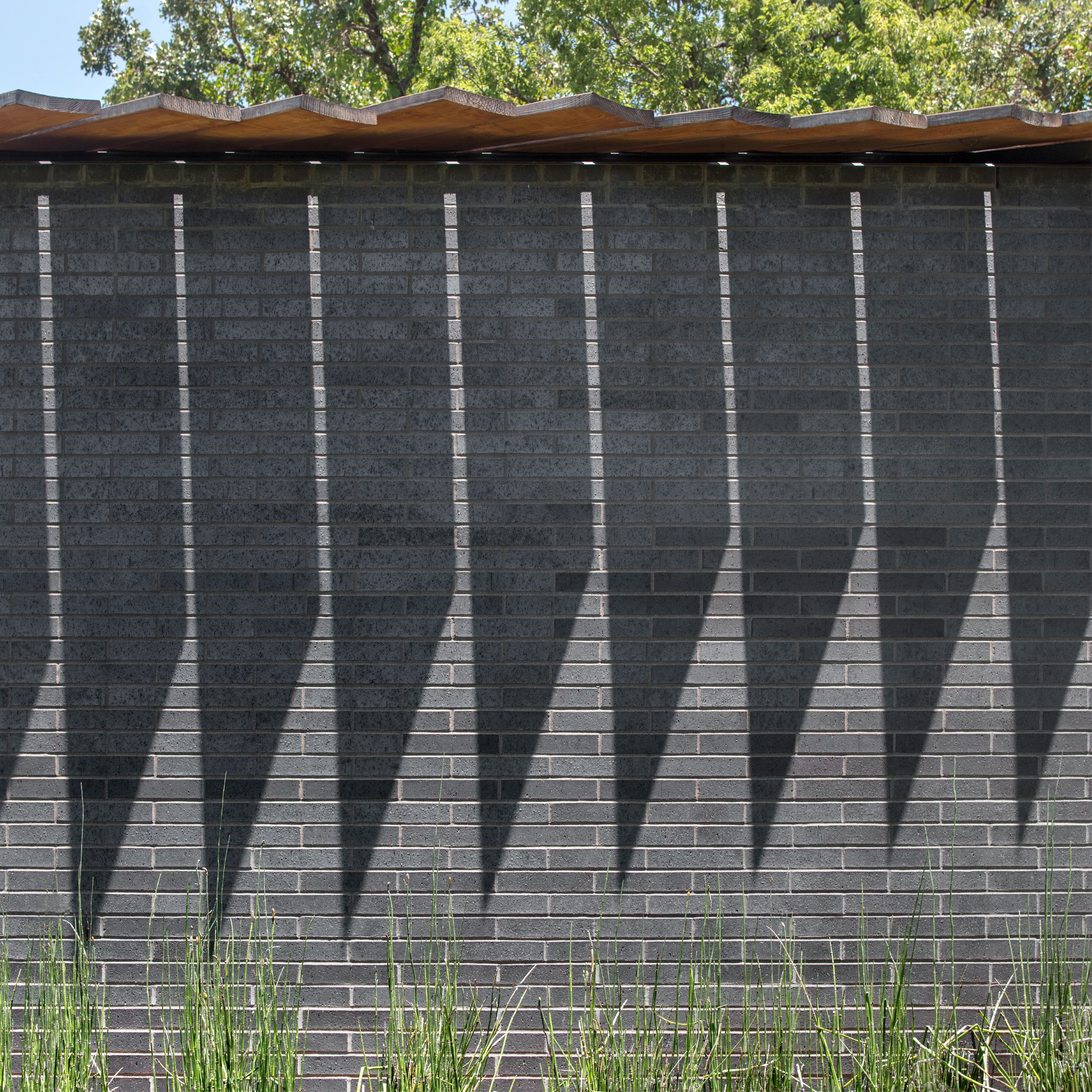
Sheltered beneath the bird, the interior spaces are organized in a cross around a central garden that connects the sleeping and living spaces with the study, garage, and detached guest house. At the northern end of the cross, the roof extends from the entry to lead visitors into the home by a covered path. At the opposing end a reflecting pool stretches out to the edge of the woods, aligned to the center of downtown and the tallest tower in the city.
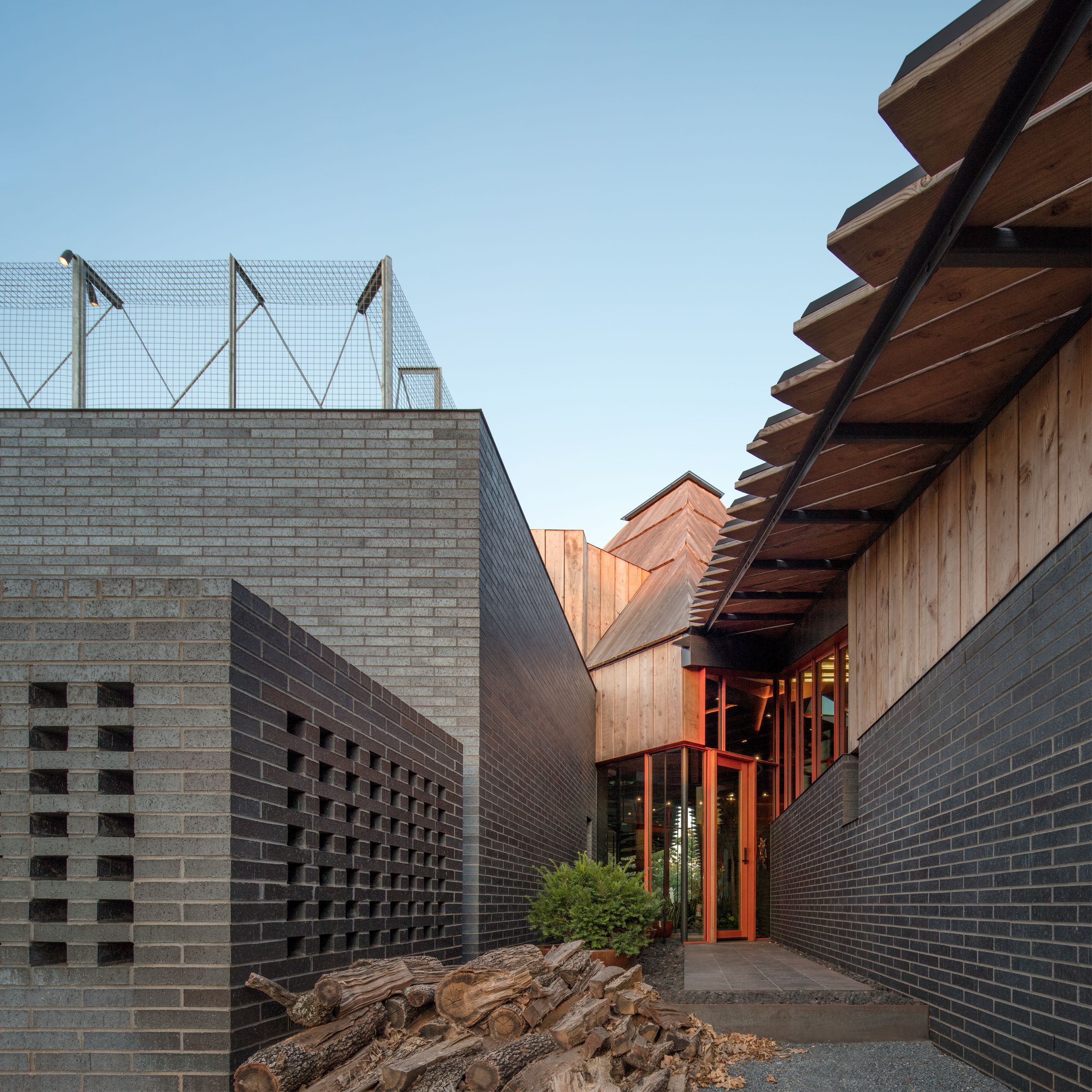
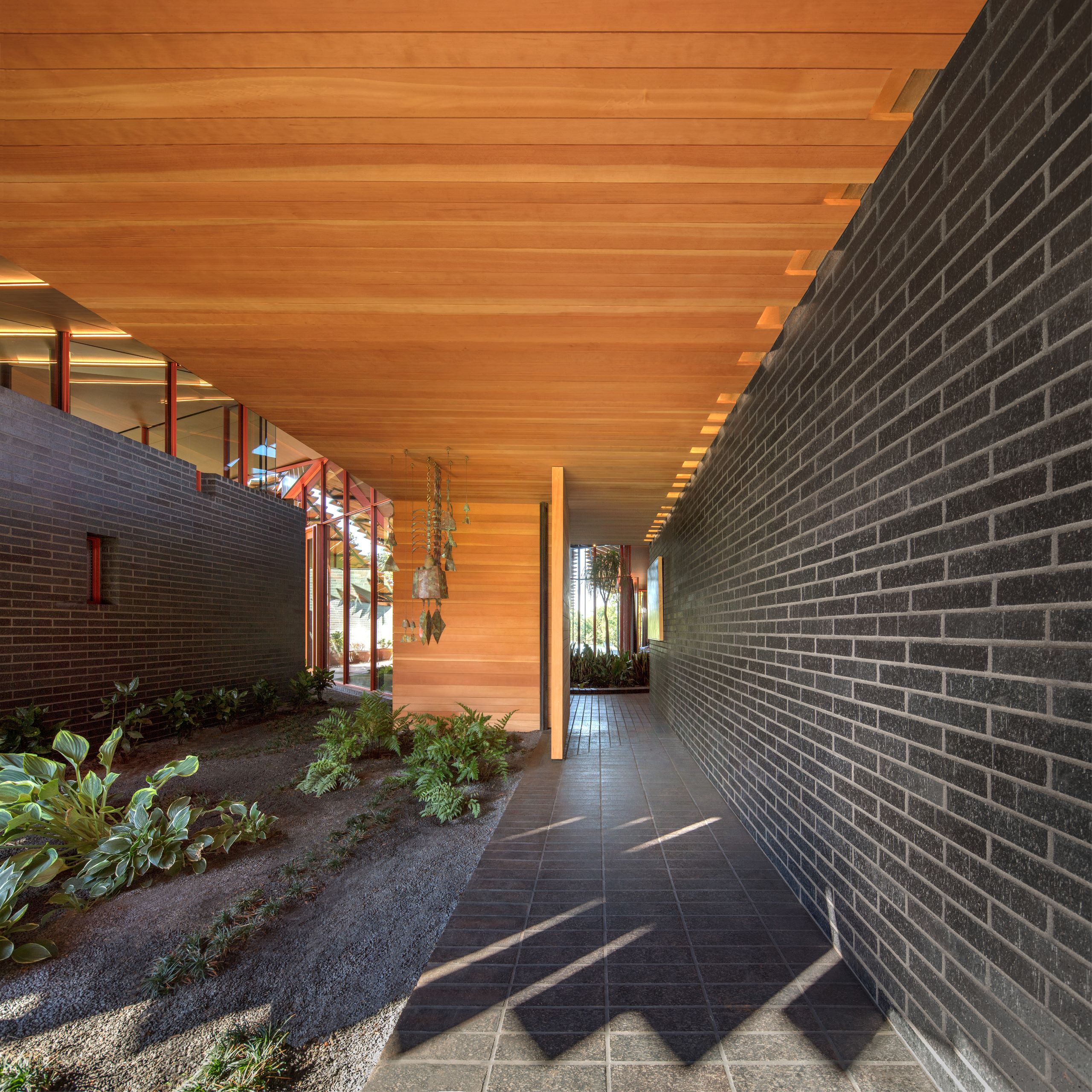
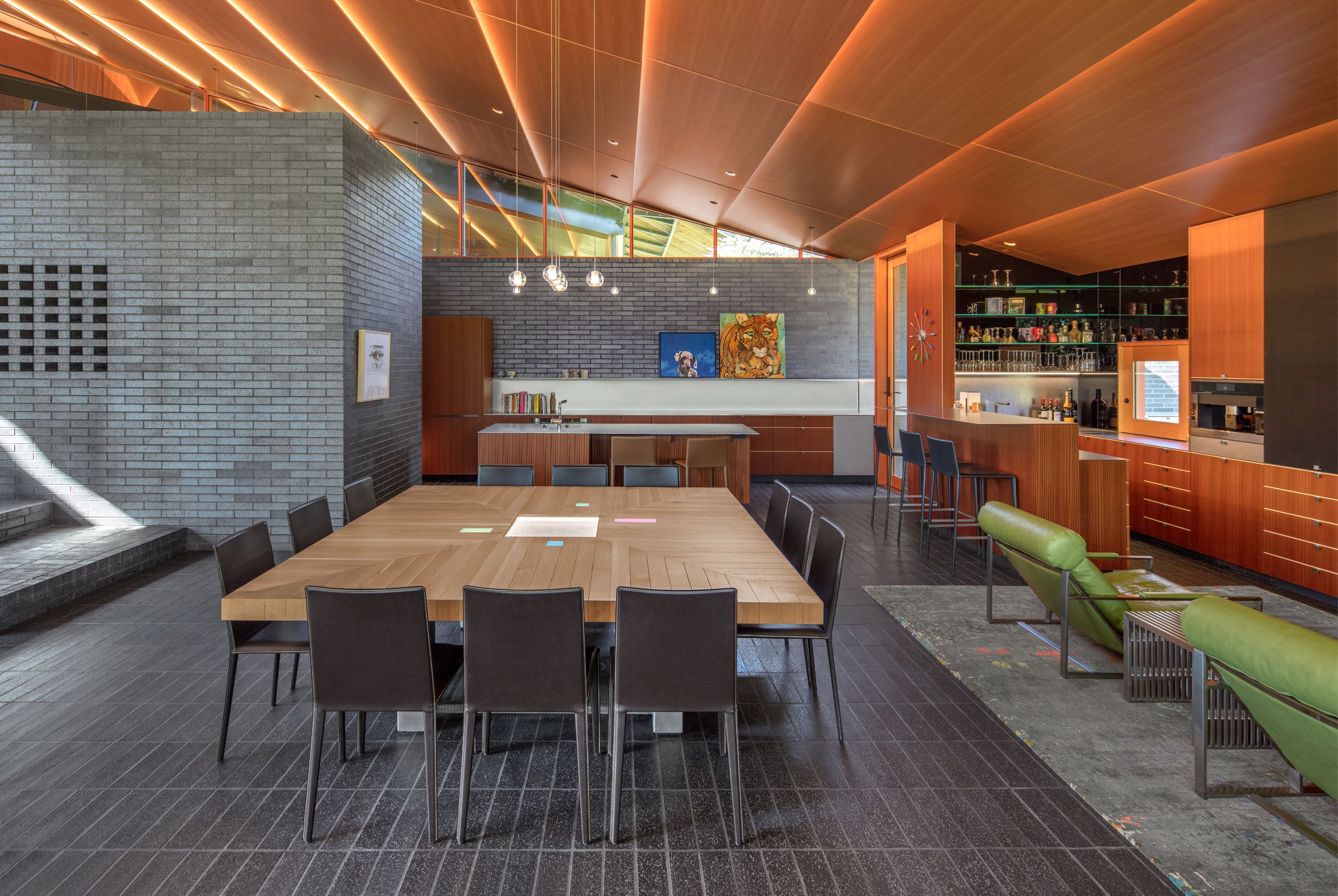
Custom steel and glass walls frame the rooms between the masses of black brick and the wood roof aloft overhead, connecting the interior spaces to the natural beauty of the surrounding landscape. The warmth of the wood ceiling is accented by the linear lights at the edge of each layer.
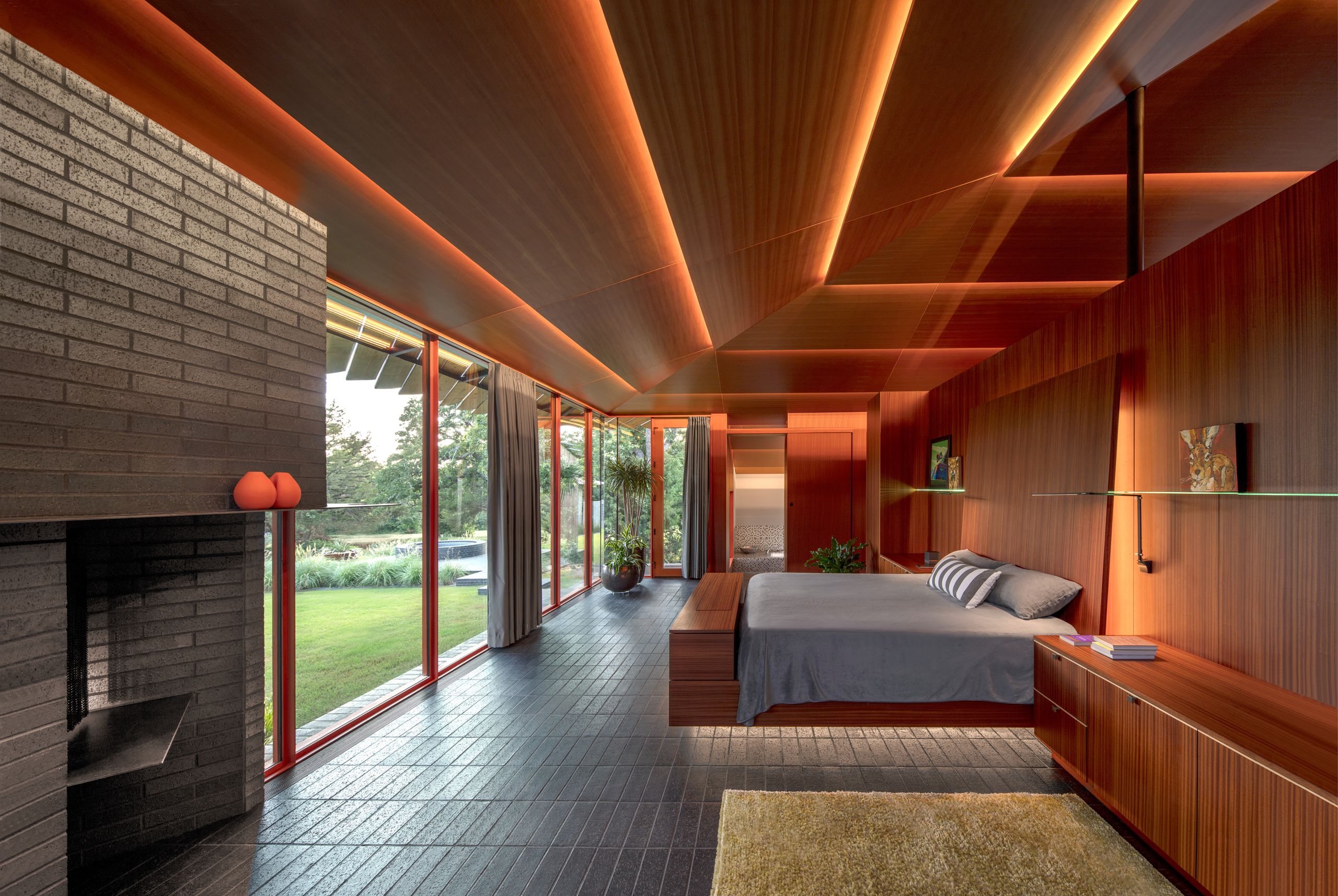

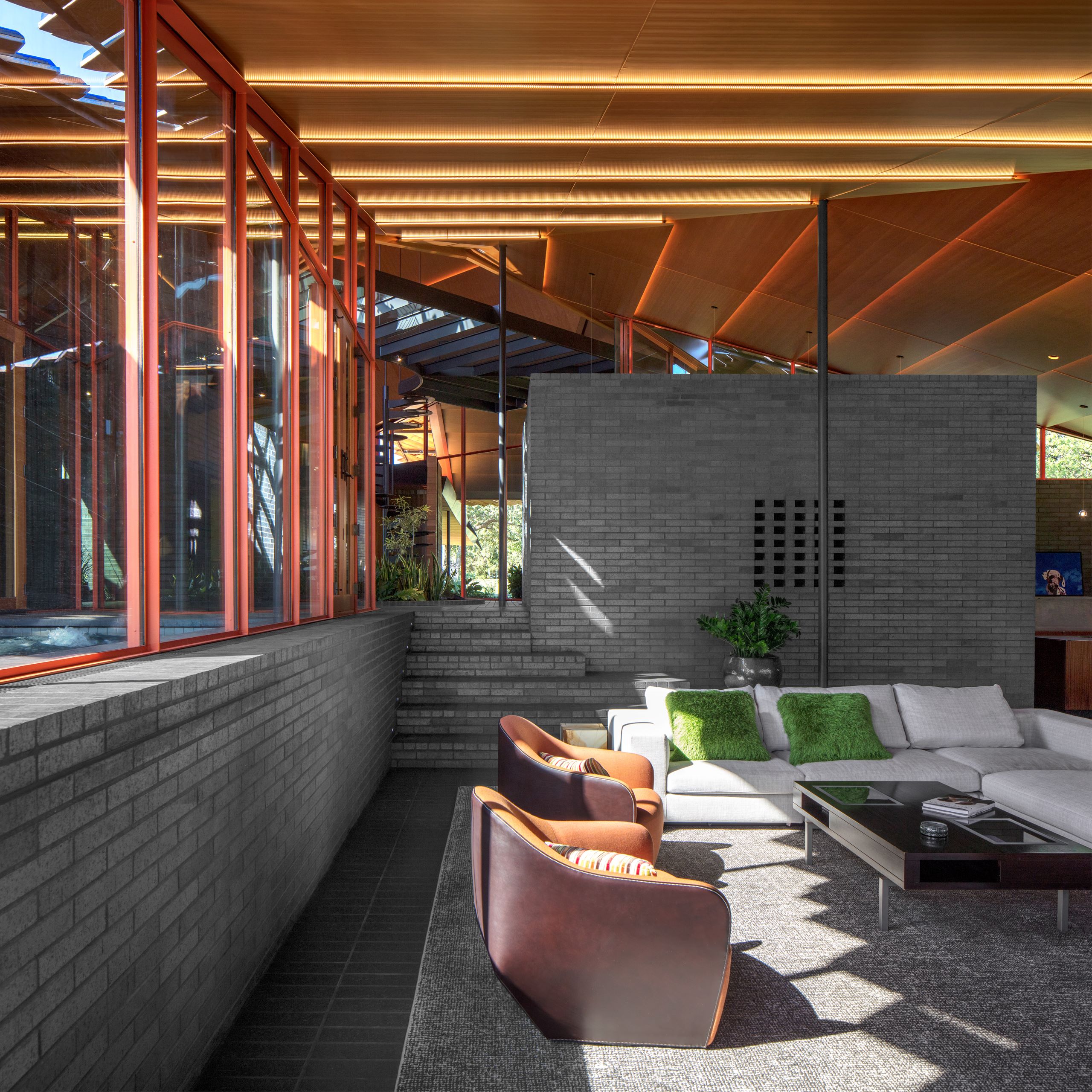
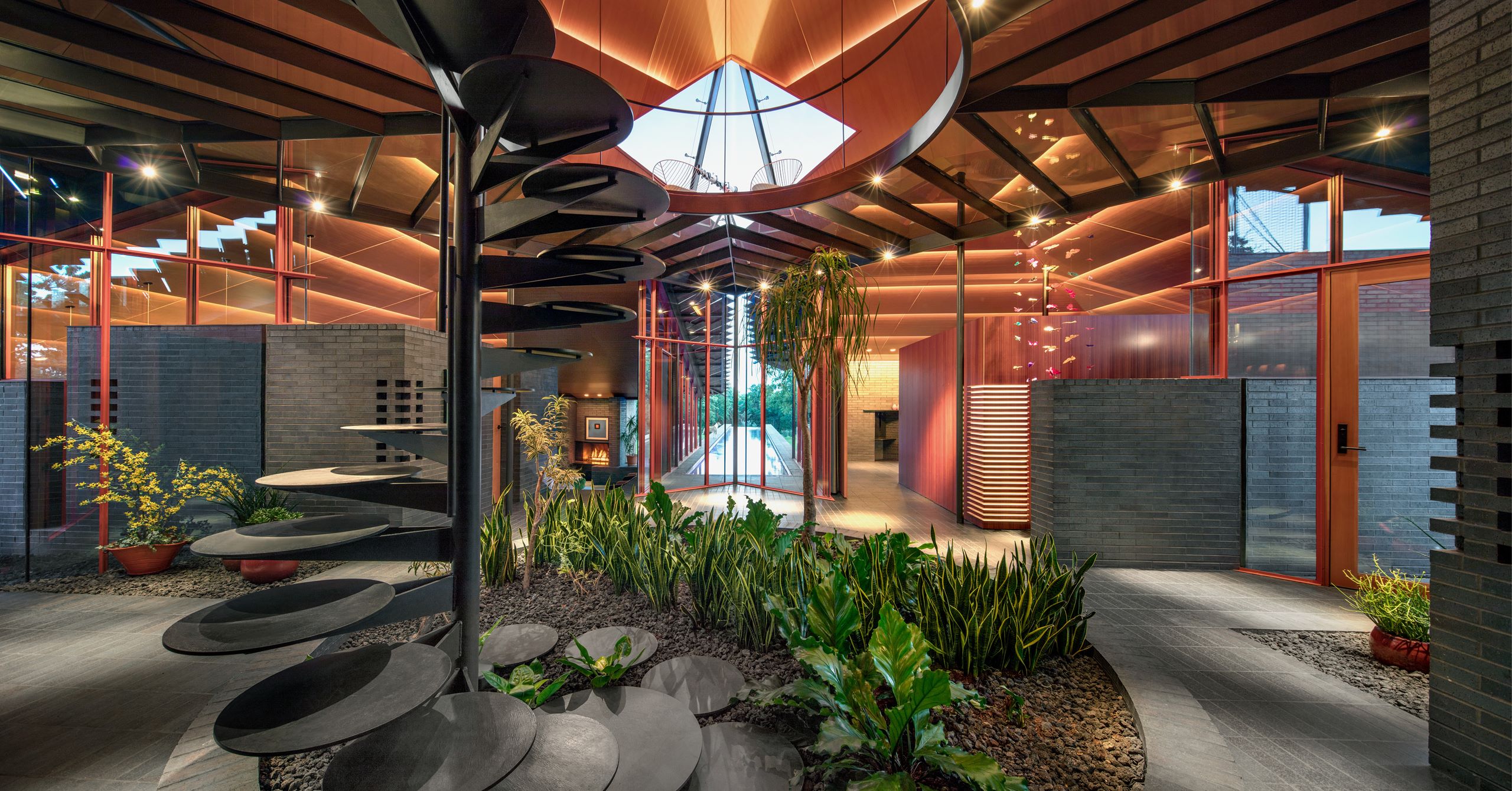
The Prairie Raptor, striking in its image as an animal nesting into the land, is also home to another wildlife. Three African serval cats roam the residence, prowling around the central interior jungle or, upon climbing the spiral stair, lurking from the transparent loft above.

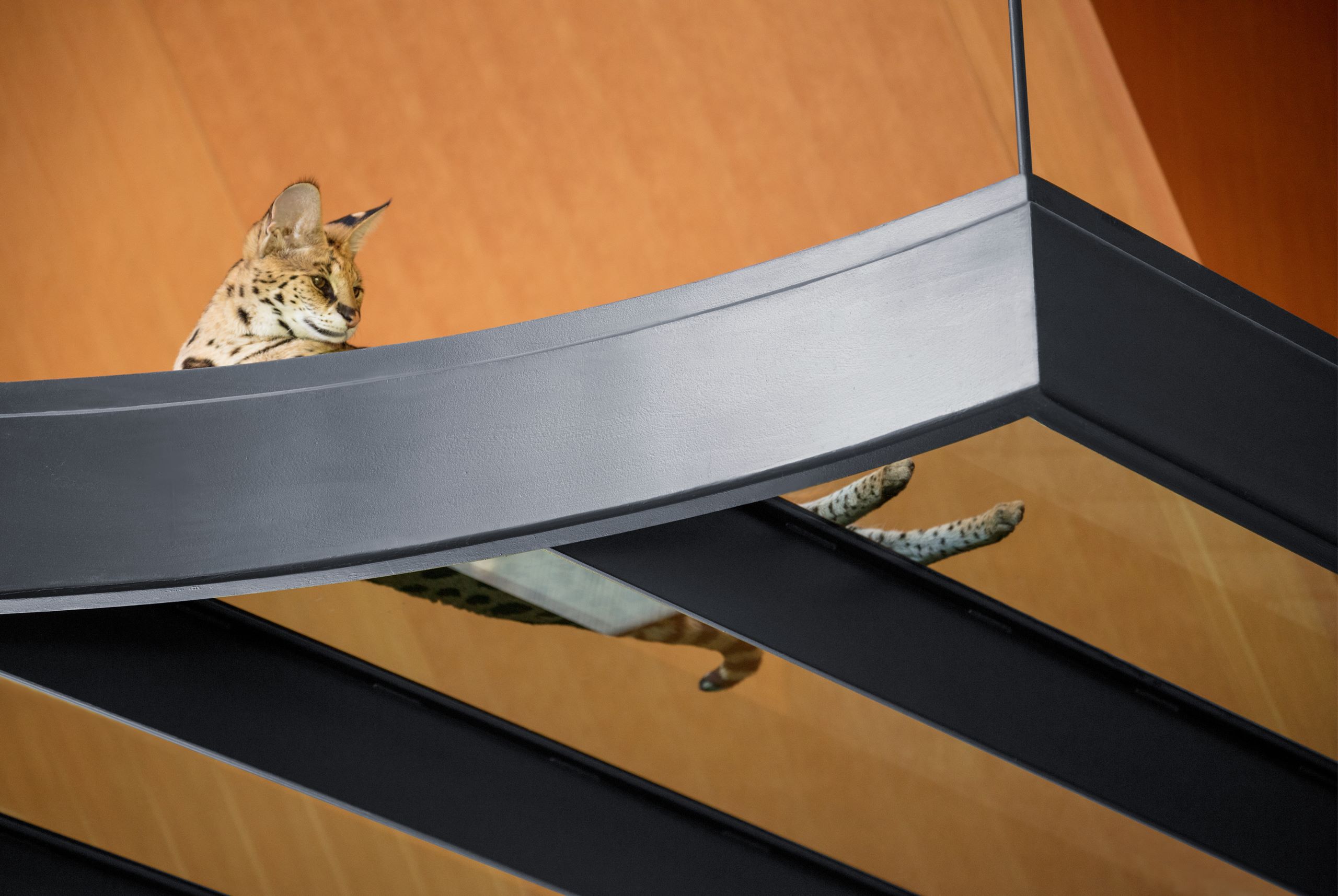

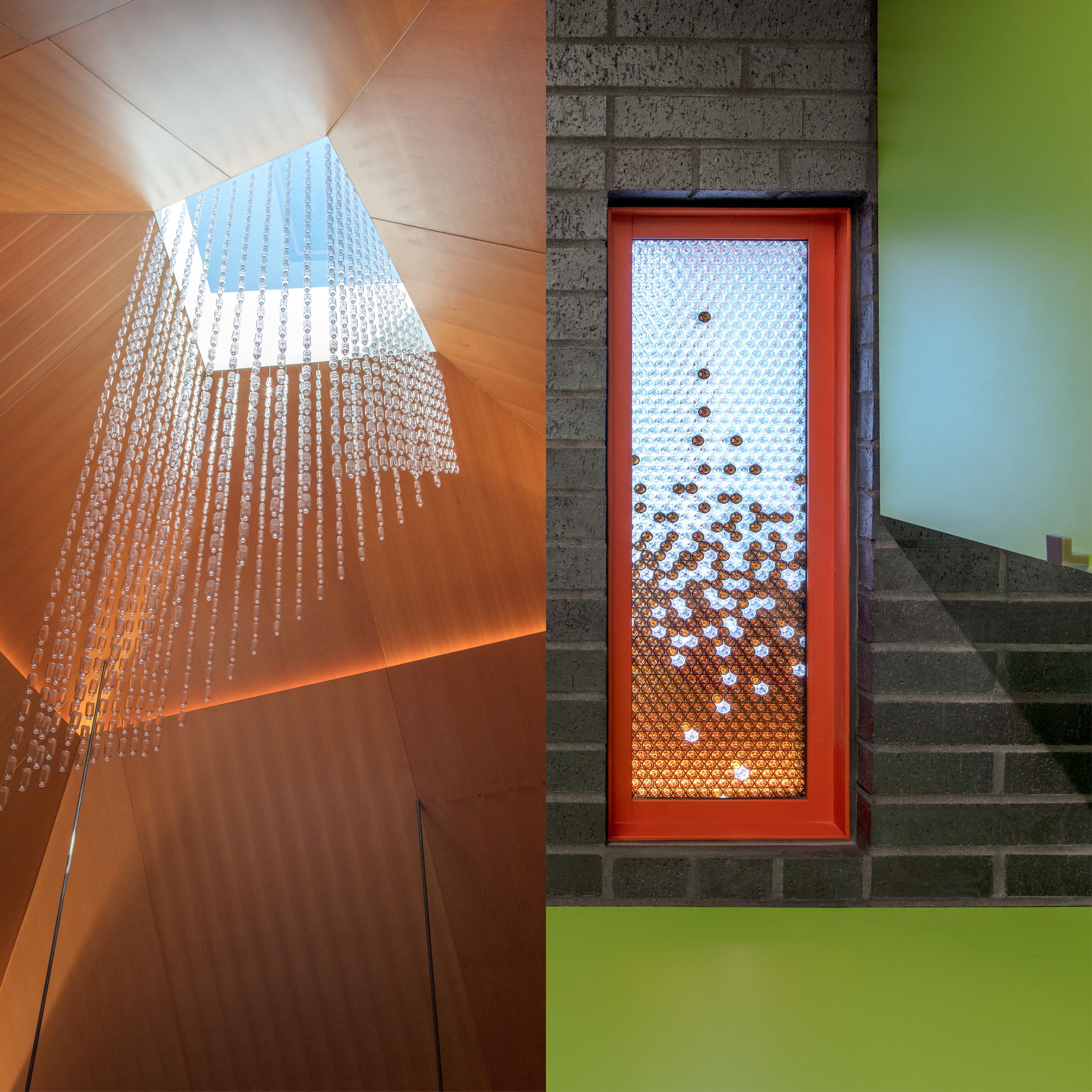

In an homage to Bruce Goff, another Oklahoma architect and contemporary of Greene known for using found objects in his work, pharmaceutical vials from the owner’s business are utilized in unexpected ways. These appear in the diffused glow of amber in windows and as a frozen cascade of sunshine hanging from the central skylight. In a final tribute to the Prairie Chicken, this window looks back towards the sky to watch the summer thunderstorms roll across the plain.
